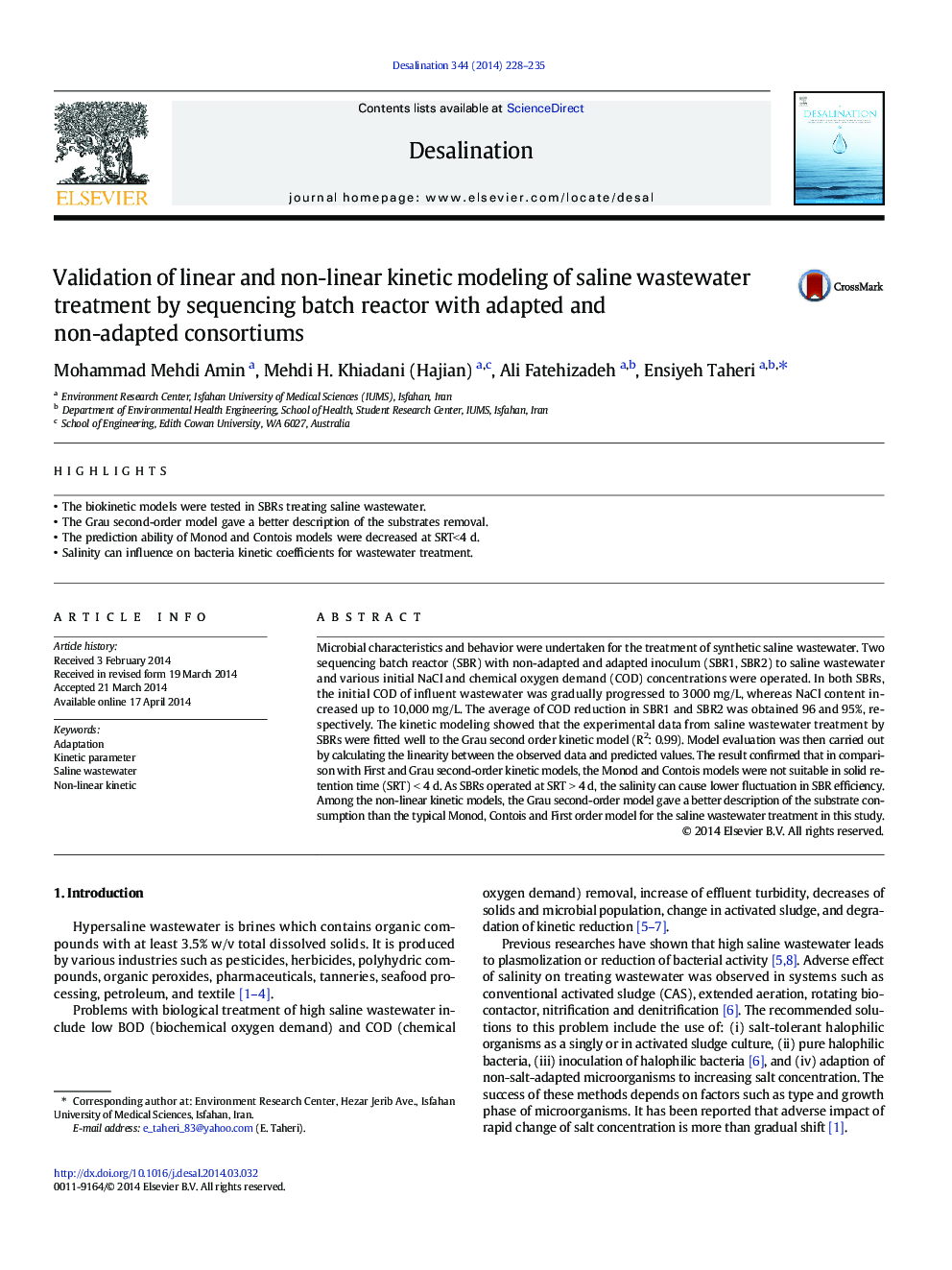| Article ID | Journal | Published Year | Pages | File Type |
|---|---|---|---|---|
| 7008487 | Desalination | 2014 | 8 Pages |
Abstract
Microbial characteristics and behavior were undertaken for the treatment of synthetic saline wastewater. Two sequencing batch reactor (SBR) with non-adapted and adapted inoculum (SBR1, SBR2) to saline wastewater and various initial NaCl and chemical oxygen demand (COD) concentrations were operated. In both SBRs, the initial COD of influent wastewater was gradually progressed to 3000Â mg/L, whereas NaCl content increased up to 10,000Â mg/L. The average of COD reduction in SBR1 and SBR2 was obtained 96 and 95%, respectively. The kinetic modeling showed that the experimental data from saline wastewater treatment by SBRs were fitted well to the Grau second order kinetic model (R2: 0.99). Model evaluation was then carried out by calculating the linearity between the observed data and predicted values. The result confirmed that in comparison with First and Grau second-order kinetic models, the Monod and Contois models were not suitable in solid retention time (SRT)Â <Â 4Â d. As SBRs operated at SRTÂ >Â 4Â d, the salinity can cause lower fluctuation in SBR efficiency. Among the non-linear kinetic models, the Grau second-order model gave a better description of the substrate consumption than the typical Monod, Contois and First order model for the saline wastewater treatment in this study.
Related Topics
Physical Sciences and Engineering
Chemical Engineering
Filtration and Separation
Authors
Mohammad Mehdi Amin, Mehdi H. Khiadani (Hajian), Ali Fatehizadeh, Ensiyeh Taheri,
